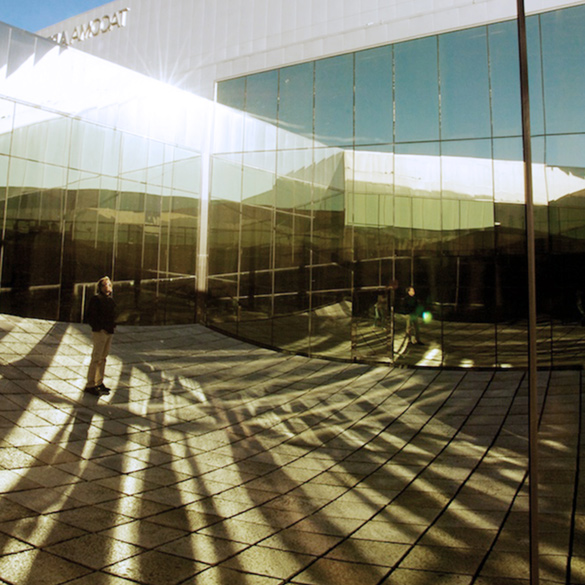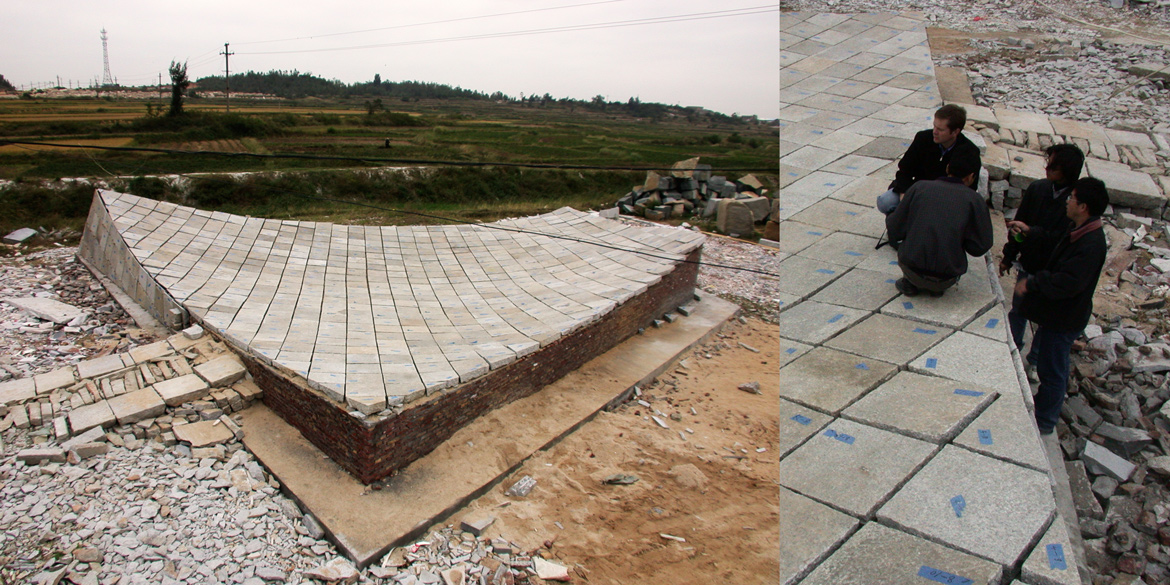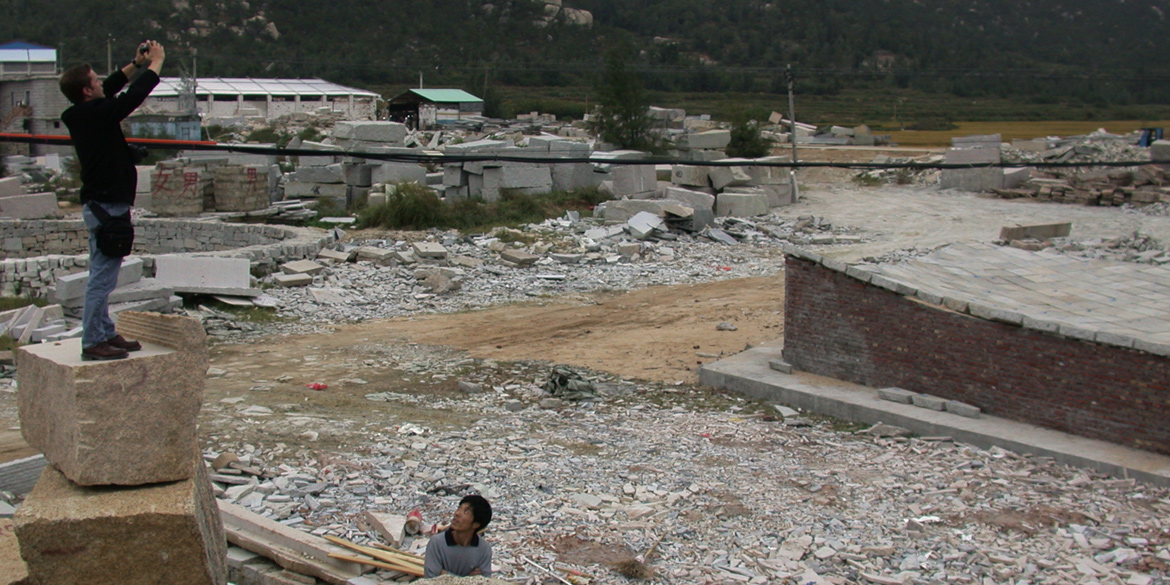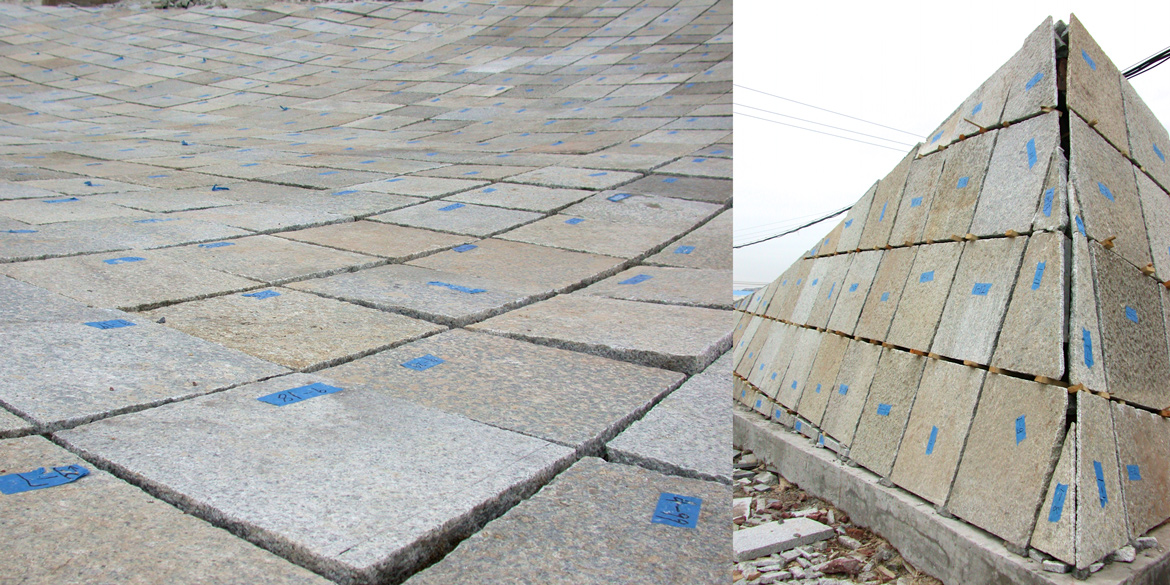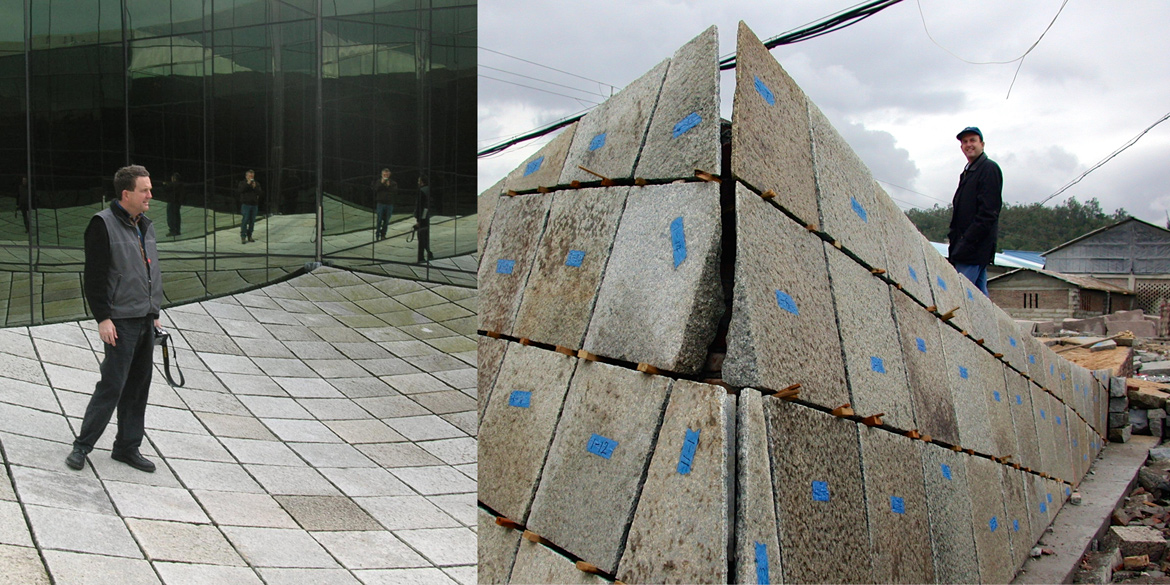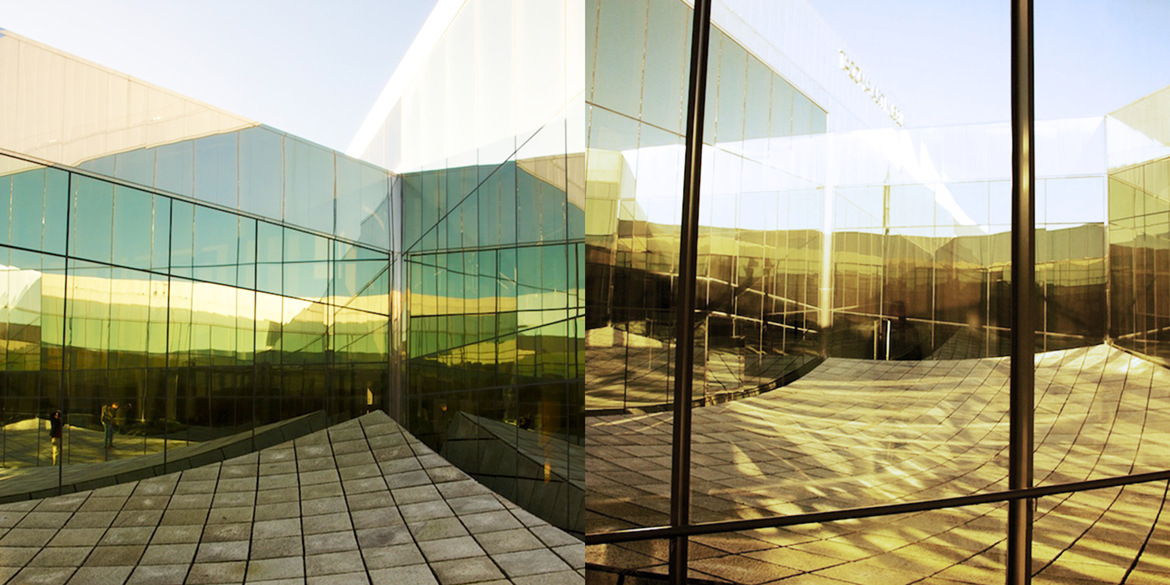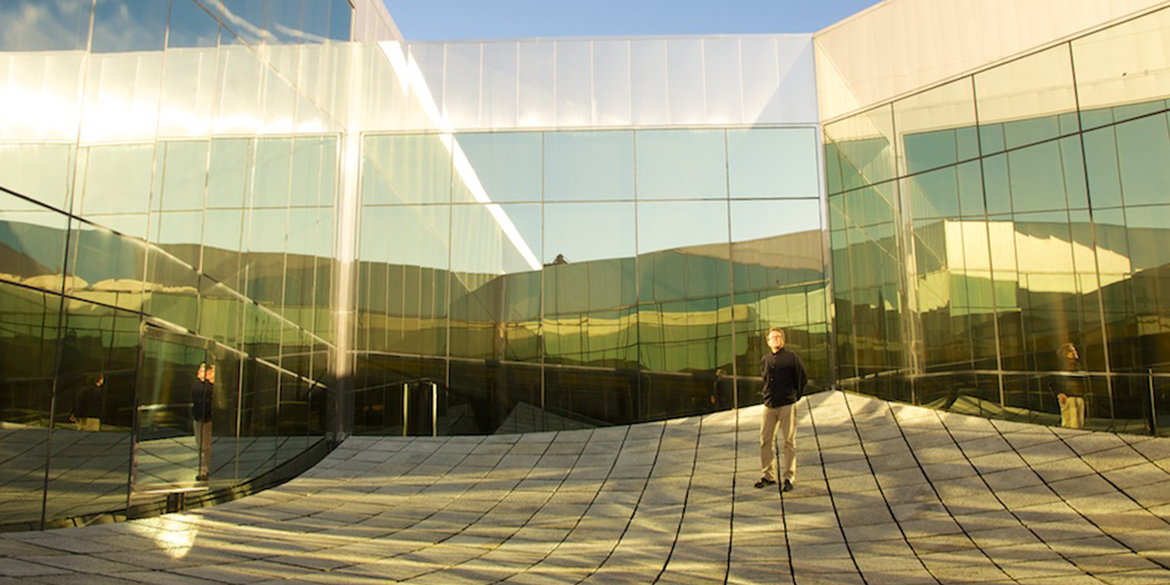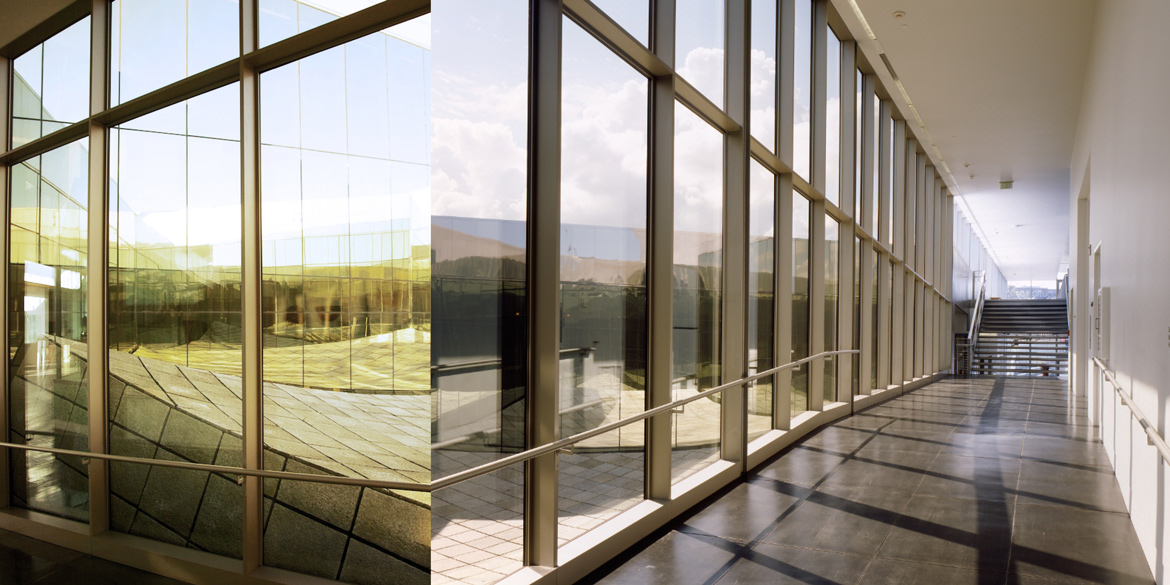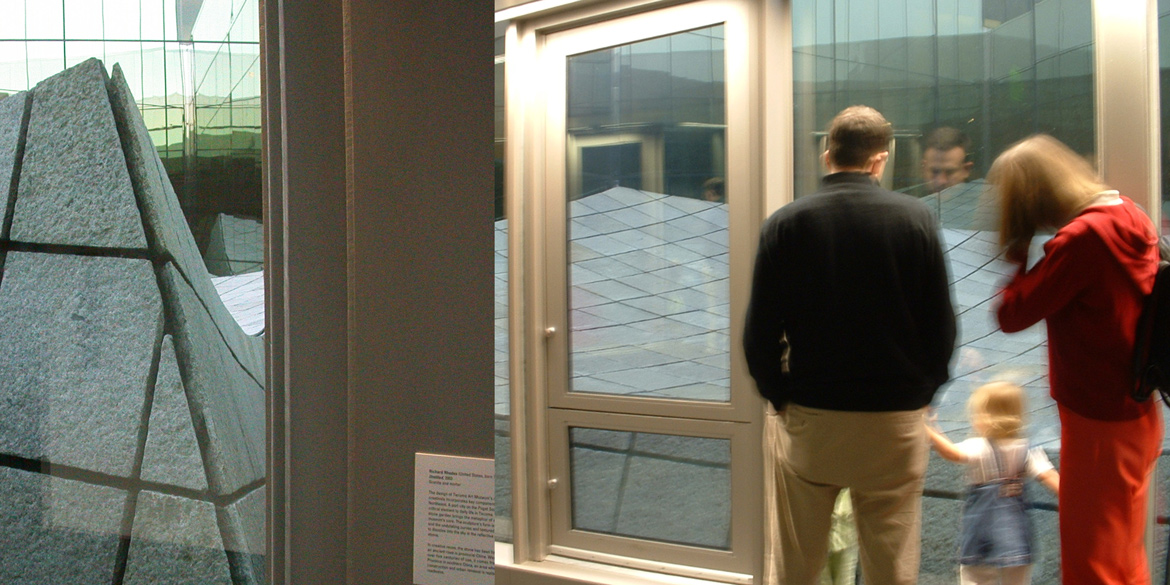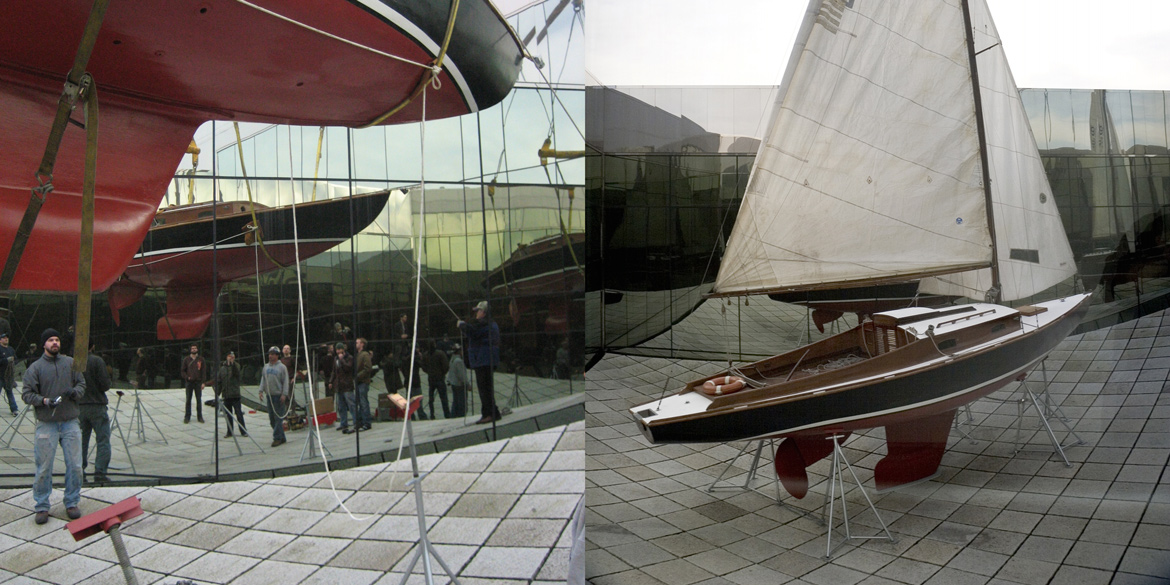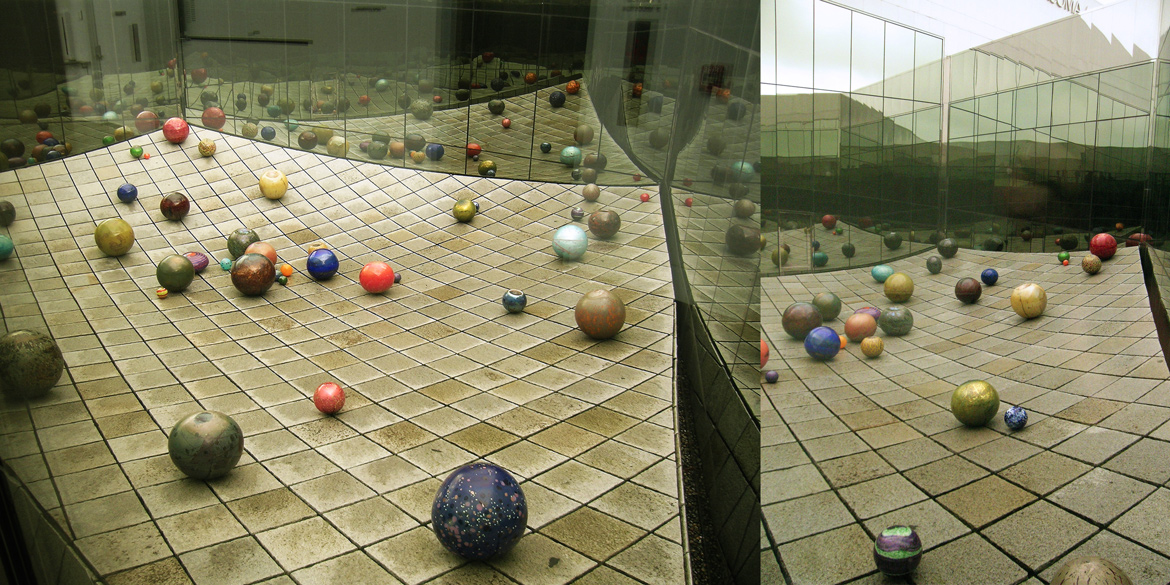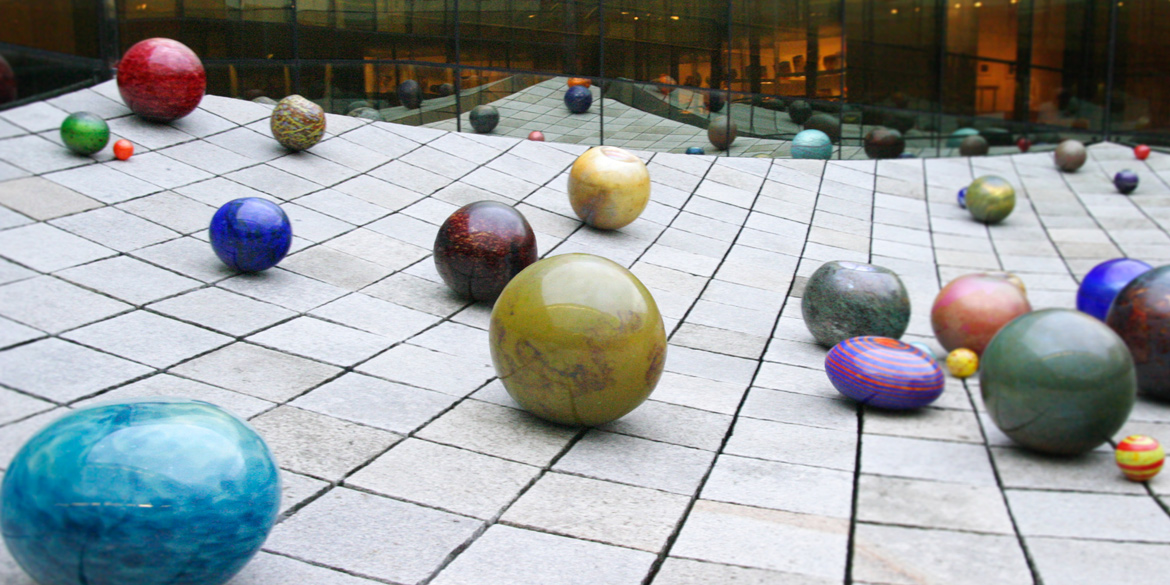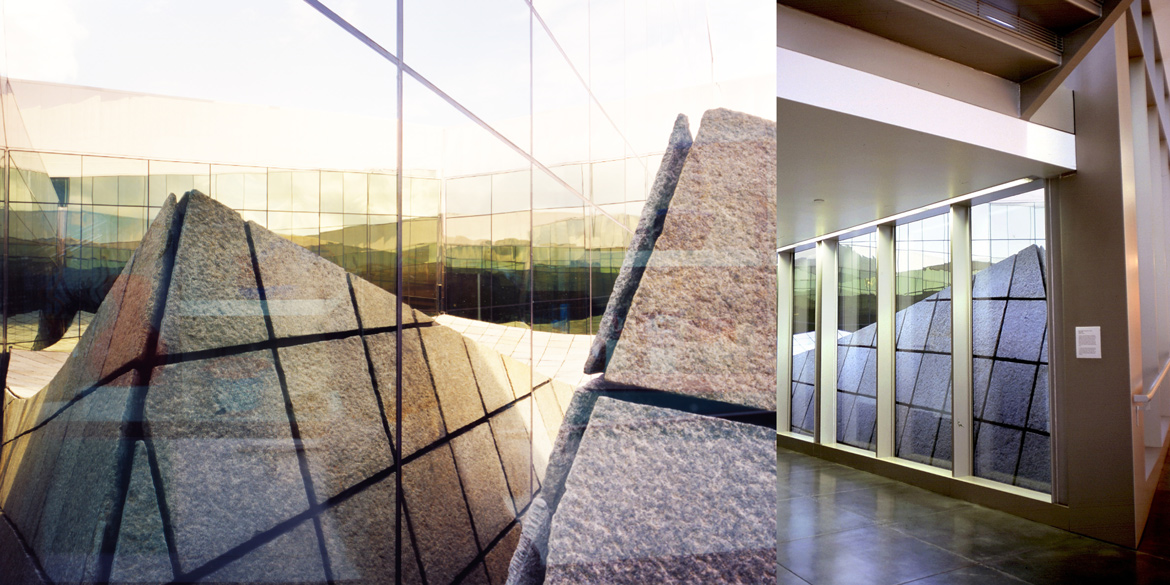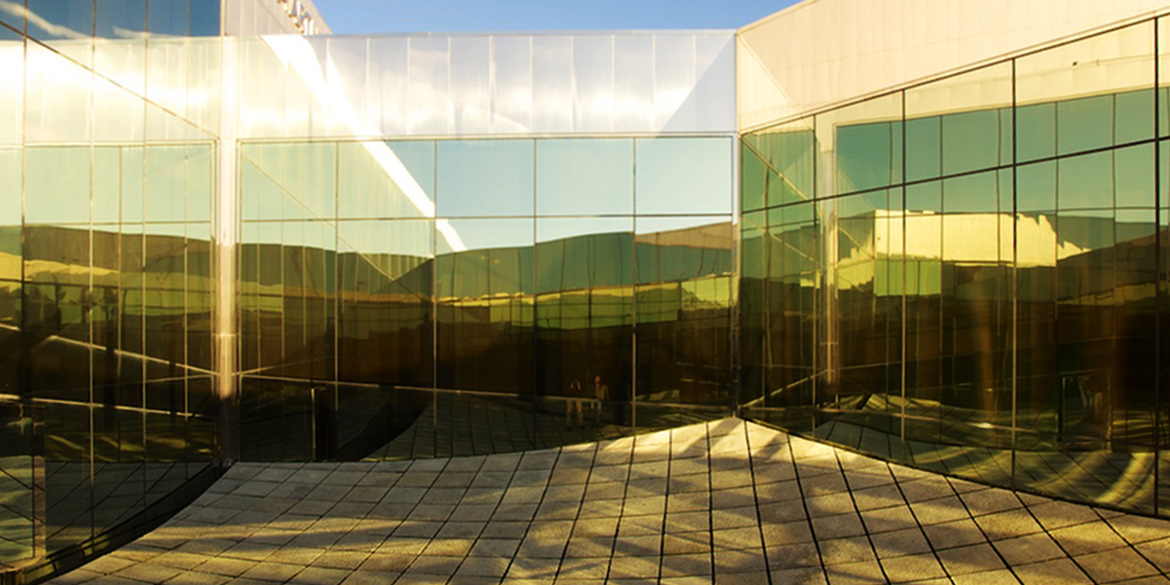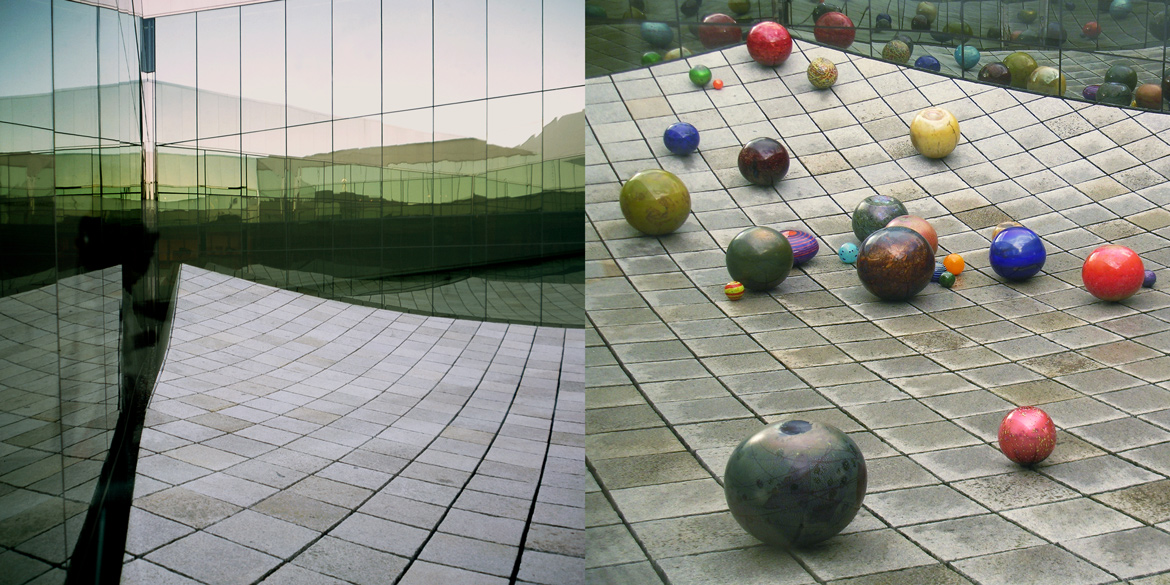Untitled – Stone Wave
The untitled public sculpture at the center of the Tacoma Art Museum is my largest public sculpture and best known work to date. Often described as the “heart” of the Museum for its asymmetrical shape and location, the work forms the central courtyard (open to the sky) from which all the museum galleries begin. A ramp winds the viewer around the perimeter of the work lifting in elevation as the galleries are explored in series.
The viewer first encounters the work 2-dimensionally as they enter the lobby of the museum. In point of fact, one is actually seeing a reflected slice of work in a giant, full-height angled mirror. At this viewing distance, the work appears a modernist painting in tune with the more conceptual notions of the museum’s architect, Mr. Antoine Predock.
However, as we move toward the galleries, the prow of “wave”, as it has become known, darkens the entrance to the perimeter walkway, continuing to obscure the viewers grasp of the larger sculpture and lengthen the entry sequence. In the subdued light created by the prow, the contrast between the Chihuly glass collections is heightened and the polarity of these two materials is explored. Surprises await the viewer as the reflective mirrored glass modifies the view and expand the experience. Ultimately the perception of the work is altered as the museum is explored; a metaphor for the experience of how art expands and changes both the internal and external perspective of the viewer.
Believing the space created by this site-specific work too important to keep to myself, I have encouraged the museum to open my sculpture to other artists. Dale Chihuly was the first to accept the challenge and his important work, “Niijima Floats” now rests on the “wave” three months annually. Other artists have also answered the call. There have been sweaters wrapping the individual stones to create a giant quilt, sailboats launched on top of the “wave” and other conceptual surprises. The press would seem to agree with my assessment: “central courtyard…now a dynamic focus of this splendid museum, a sweeping stone wave fashioned by artisan Richard Rhodes…that may be the single most dramatic exhibition space in the Northwest.” City Arts The Next Wave
Friday, September 1, 2006 | by STEVEN WINN
– See more at: http://www.cityartsonline.com/issues/tacoma/2006/09/next-wave#sthash.4aKELZdE.dpuf
The work was originally assembled in a rice paddy in Southern China where the 500-600 year old granite pavers were salvaged from the path of rising development. Each of the more than 700 stones that make up the hyperbolic wave-form have been hand-crafted to exact dimensions. It is this subtle shaping that gives the illusion that the stone’s essentially flat surface is curved. After pre-assembly, the stones were numbered and installed in exacting order within the mirror-walled museum courtyard. Since the administration offices for the museum reside directly under the sculpture, great care was taken to limit and distribute the weight of the stone work. Polystyrene foam blocks up to seven feet in thickness form the substructure on which the stones are placed.
